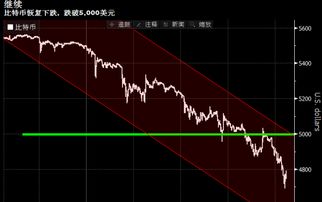Maximize Profit, Minimize Noise: 2025 Silent Miner Guide
In the ever-evolving world of cryptocurrency, mining remains a cornerstone activity, particularly for enthusiasts and enterprises invested in Bitcoin (BTC) and Ethereum (ETH). As the market matures, so do the demands of miners—no longer is raw computing power the sole focus. Today’s miners seek to maximize profit margins while minimizing operational disruptions, particularly noise pollution, a common overlooked challenge in large-scale mining operations. Enter the 2025 Silent Miner Guide, a comprehensive manual tailored for the upcoming generation of mining machines and hosting services that prioritize efficiency, sustainability, and stealth.
At its heart, mining involves validating transactions and securing blockchain networks through high-powered computers called mining rigs. These rigs, often composed of ASICs (Application-Specific Integrated Circuits) for Bitcoin or GPUs (Graphics Processing Units) for more versatile currencies like ETH and DOGE, consume significant electricity and generate substantial heat and noise. The loud hum of cooling fans and the clatter of high-speed processors, while signs of productivity, can become a source of neighborhood tension and operational setbacks. Thus, the silent mining revolution is both a technological and environmental imperative.
Mining farms are uniquely positioned to benefit from innovations that suppress sound without sacrificing hash rate performance. For example, the introduction of soundproofed enclosures integrated with advanced thermal management drastically reduces decibel levels. These enclosures are crafted with acoustic panels and insulated materials that dampen fan noise while optimizing airflow. Combined with intelligent workload distribution algorithms, miners can maintain peak efficiency without triggering noise complaints or regulatory scrutiny.

Hosting mining machines introduces another dimension to this equation. Many miners, especially novices or global investors, trade off direct management for hosted solutions that provide turnkey access to professional-grade hardware. In 2025, hosting services will increasingly emphasize noise control alongside uptime and profitability. Strategic site selection—favoring remote locations or underground facilities—combined with sound masking technologies, will become standard. Embracing renewable energy sources not only lowers carbon footprints but often corresponds with quieter, more energy-efficient power supplies, further enhancing the silent mining ethos.
Bitcoin miners especially benefit from these advancements. Given BTC mining’s growing difficulty and energy demands, large-scale miners must invest heavily in hardware upgrades, including the latest mining rigs designed for optimal power-to-noise ratios. The market’s top miners come equipped with intelligent fan speed control, vibration-dampening mounts, and silent power supplies. These upgrades reduce operational noise, which historically limited onsite deployment to industrial zones. Now, decentralized, less intrusive operations can take root closer to urban tech hubs, expanding accessibility.
Ethereum mining, although on the brink of transition with Ethereum 2.0’s proof-of-stake mechanism, still boasts a sizable mining community. Mining rigs optimized for ETH often leverage high-performance GPUs, known for their distinctive fan noise frequency. Innovative cooling solutions like liquid immersion or hybrid air-liquid cooling systems begin to appear on the scene, granting miners the ability to keep rigs cool and quiet simultaneously. This is a game-changer for mining farms seeking to host thousands of mining units, each operating in near silence despite immense hash power.

The decentralized nature of cryptocurrencies like Dogecoin (DOGE) fosters a unique mining culture, which often emphasizes community and accessibility over sheer computational brute force. Dogecoin miners frequently use consumer-level rigs or shared hosting solutions that benefit from silent miner strategies, especially since many DOGE enthusiasts operate from home or small offices. Integrating quiet fans, vibration footing pads, and silent power bricks can transform a once disruptive rig into a whisper-quiet device, encouraging broader participation and hobbyist investment in mining.
Exchanges and the broader digital currency ecosystem also have an indirect nexus with silent mining. Profitable and eco-conscious mining operations encourage greater network stability and healthier coin circulation, which bolsters confidence in the market. Exchanges, sensitive to regulatory and social pressures, welcome transparency initiatives tied to green mining certifications and noise-reduction technologies. Hosting platforms partnering with miners to disclose sustainability metrics and noise pollution compliance create a competitive edge, aligning customer values with operational realities.
Technology innovation remains pivotal. Artificial intelligence is increasingly employed to monitor ambient noise levels, dynamically adjusting cooling and processing activity to balance hash power output with environmental comfort. Predictive maintenance systems detect hardware anomalies that often precede abnormal noise spikes, preventing prolonged disturbances and ensuring constant operational health. Blockchain analytics integrate with hardware monitoring to provide a holistic dashboard for miners, marrying real-time profitability data with acoustic environment statistics.
Looking ahead to 2025, the silent miner is not a passive observer but an active participant in defining the future of cryptocurrency mining. By adopting smart hardware, leveraging hosting environments designed for acoustic efficiency, and integrating renewable energies, miners can unlock new potential earnings while gaining social license to operate. This paradigm shift reduces the friction between tech innovation and civic harmony, ensuring that mining can thrive in diverse environments—from bustling metropolitan datacenters to isolated eco-friendly farms.
In conclusion, for any mining entrepreneur or hobbyist eager to scale operations sustainably and profitably, the 2025 Silent Miner Guide offers indispensable insights. Mastering the art of noise reduction without sacrificing profitability involves a blend of cutting-edge hardware, strategic hosting, and intelligent software management. As Bitcoin, Ethereum, Dogecoin, and other cryptocurrencies continue their march through the digital frontier, silent mining will be the quiet force powering the next wave of blockchain prosperity.




















